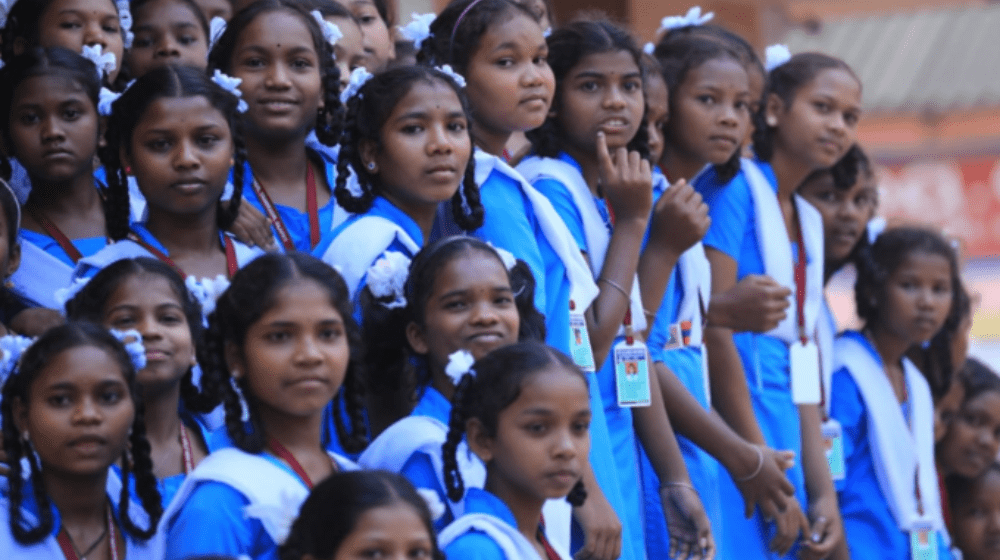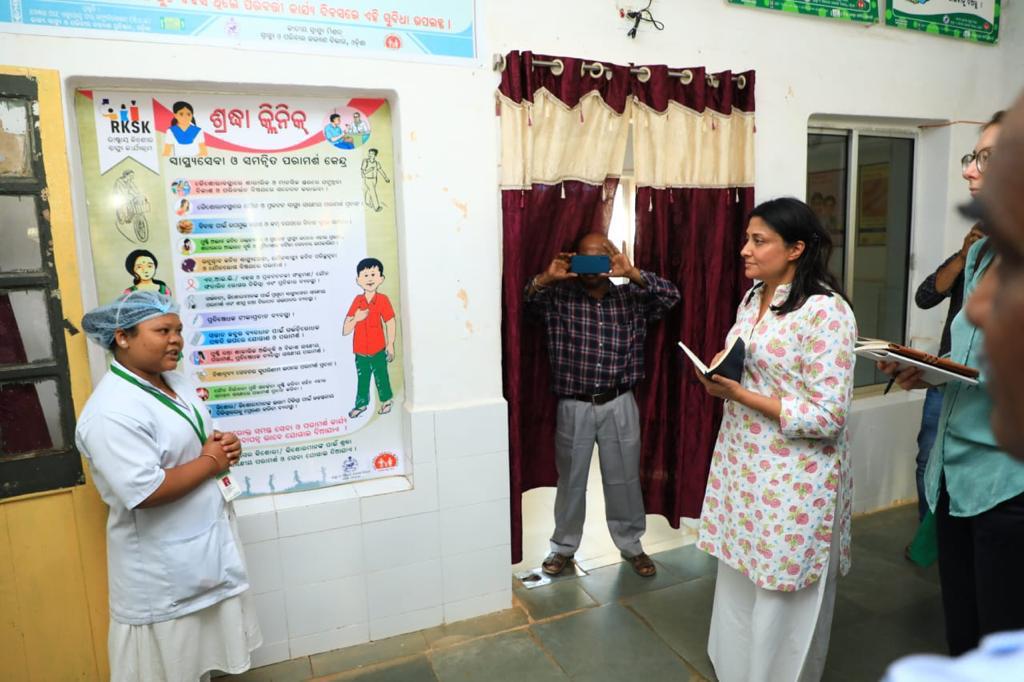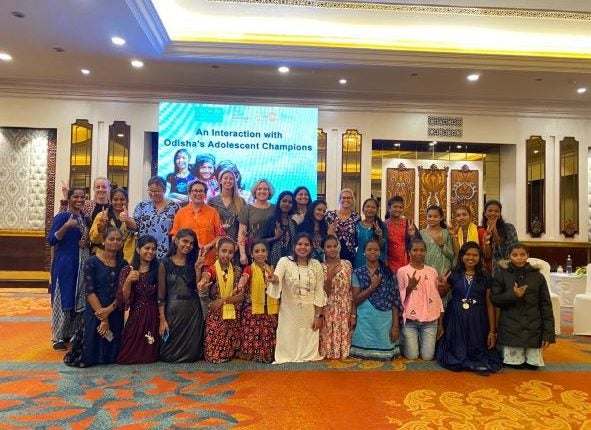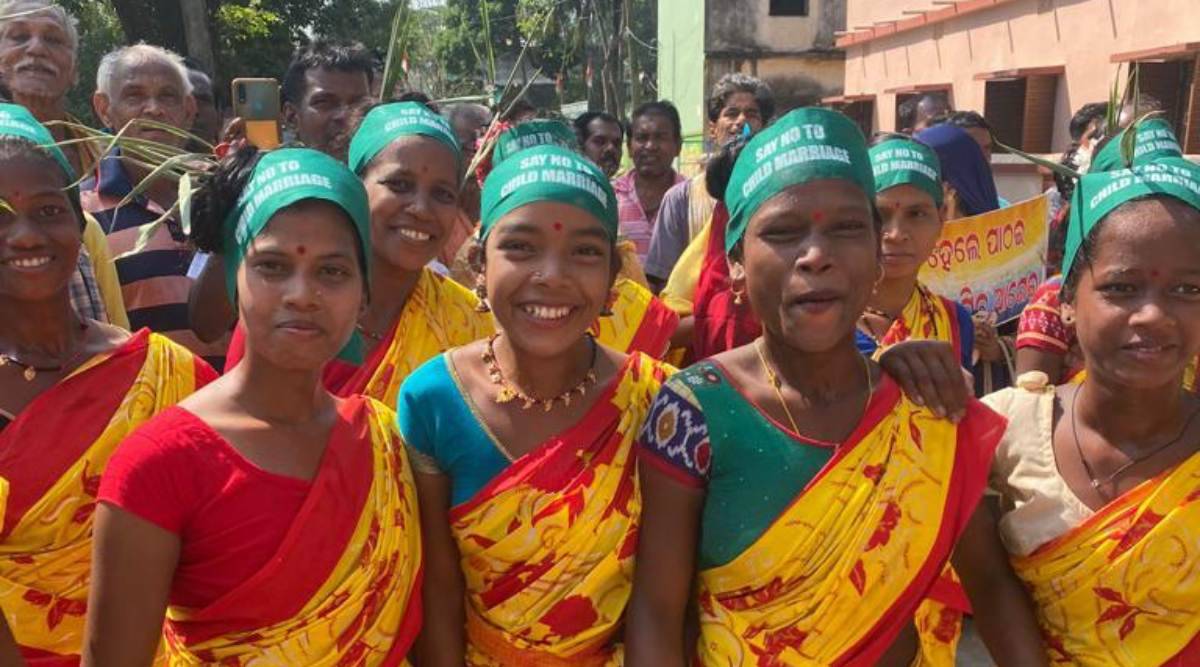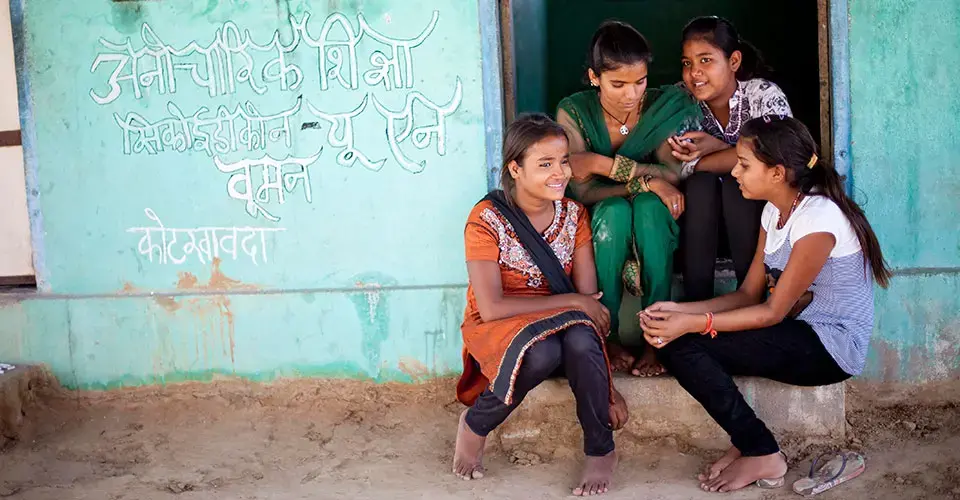India has seen a steady decline in the prevalence of child marriage, from 47.4 per cent in 2005 to 23.3 per cent in 2021,[1] which has led to a 50% decline in child marriage in South Asia. Steering committee members of the Global Programme to End Child Marriage visited India to witness key interventions in action and interact with stakeholders at the national, State (Odisha), and district (Ganjam and Gajapati) levels from the end of October to early November 2022.
“As the international community, supporting the Global Programme to End Child Marriage, we are here to learn from India's successes in reducing the incidence of child marriage. Indeed, the development, growth, and upholding of universal human rights in many countries depends on it,” said Ms. Mieke Vogels, representing the Government of Netherlands in the Steering Committee.
Steering committee visit to adolescent friendly health clinic at a community health center, Gajapati
The UNFPA-UNICEF Global Programme to End Child Marriage is the first United Nations led joint initiative designed with a focus on promoting the rights of adolescents to delay marriage, supporting adolescents to realize their rights by engaging with communities, and strengthening systems that deliver critical services to adolescents, including health and education. It was launched in 2016 and covers 12 countries - Bangladesh, Burkina Faso, Ethiopia, Ghana, India, Mozambique, Nepal, Niger, Sierra Leone, Uganda, Yemen, and Zambia.
Funded by the Governments of Belgium, Canada, Italy, the Netherlands, Norway, the United Kingdom, the European Union, and Zonta International, the Global Programme, currently in its second phase (2020-2023), has reached over two million girls through life skills education interventions and has galvanized nearly 20 million community members to take action against child marriage and promote adolescent empowerment in 175 districts across fifteen states in India. The programme has also supported close to 85,000 adolescent girls in India at risk of child marriage to enroll and or remain in school.
Steering committee members interact with Odisha’s adolescent girl champions
The prevalence of child marriage in India varies significantly from one state to another (with eight states currently witnessing rates higher than the national average). Girls from poorer families, living in rural areas, and with little or no education are more likely to experience child marriage. The health, social, political, and economic effects of the COVID-19 pandemic have worsened existing systemic gender inequalities and estimates indicate up to 10 million more girls could become child brides globally as a result of the pandemic.
UNFPA India representative Andrea Wojnar said, “Child marriage, because of its linkages with poverty, low levels of education, and poor access to essential services can lead to increased risk of early pregnancy and maternal mortality. We must take stock of what has and has not worked and keep our focus on reaching the most vulnerable and marginalised adolescents, including those in remote areas. We cannot afford to lose the momentum of the significant progress already made in India.”
Girls from Ganjam district in Odisha propagating the message to end child marriages
Recognizing that child marriage is both a symptom and a result of deep-seated gender inequalities and restrictive gender norms, UNFPA focuses on adopting gender transformative approaches to tackle harmful gender roles, norms, and power relations. These approaches foster critical examination of inequalities and gender roles and focus on enhancing the value of women, girls, and marginalized groups by transforming underlying social structures, policies, and broadly held social norms that perpetuate and legitimize gender inequalities.
The Global Programme to End Child Marriage will soon enter its third phase, which aims to enable significantly larger numbers of adolescent girls and boys to fully enjoy their rights and choices and experience a childhood free from the risk of marriage. Advancing adolescent rights, agency and autonomy is the most critical pathway to achieve the global common goal of eliminating harmful practices against women and girls by 2030. India’s progress on this front is critical to the success of the Global Programme, and the achievement of the Sustainable Development Goal on ending early, child, and forced marriage.
_________________________________________________________________________________________________________________
[1] Source: National Family Health Survey data (2005-2021) for women aged 20-24 years marrying before the age of 18

